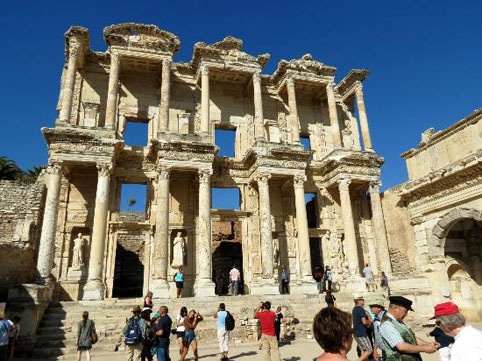
WORK is underway at Ephesus, near İzmir, in an attempt to get it included in the UNESCO World Heritage List.
Dating back to the 6th century BC, Ephesus hosts around 2 million local and international tourists every year.
The first application for the city to be included in the world heritage list was made in 1994 and although it has been added to the UNESCO tentative list, along with 37 other sites in Turkey, it has failed to be included in the main list.
Selçuk Mayor Zeynel Bakıcı said the value of Ephesus was known to everybody in the world, but some work was still required before it could be added to the elite list.
“Foreigners ask for Ephesus to be included in the [UNESCO] list more than we [Turkey] do,” he said, adding that the biggest deficiency in the ancient city was how the site was managed.
“We have been working on improving the way that Ephesus is managed. There is no problem with Ephesus. Internal administrative protocols have been ignored so far and when they are completed, it will be easier for us to be added to the [UNESCO] list.
“The UNESCO committee that will visit the ancient city have some expectations. We will get a positive result when we offer them what they want. I believe that Ephesus will enter the list in 2015.”.
It has been reported the UNESCO committee will go to the ancient city in September and a decision on whether Ephesus is added to the list will be announced in March 2015.
Meanwhile, magnificent wall paintings dating back 2,000 years in the Yamac Houses of Ephesus are undergoing a restoration to return them to their original glory.
“Touching a 2,000 year-old work, and preserving it for the next 2,000 years gives you a charge,” said Hasan Savaser, who has been working on restorations in the area for the past 23 years.
The Yamac Houses, which were the abodes of the rich built on terraces on the skirts of Bulbul Mountain in 1 BC, are famous for wall paintings and floor mosaics in the ancient city.
The wall paintings were restored following excavations in 1977. In 2010, a new process started for the paintings to be restored with the latest technology. As part of the works, 120-square-meter wall paintings in eight rooms were restored this year.